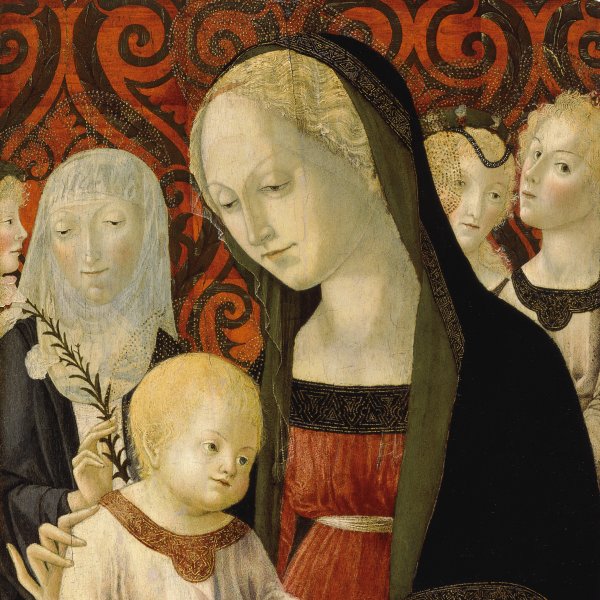Francesco di Giorgio Martini
Siena, 1439-1501
Francesco di Giorgio was an architect, engineer, painter, miniaturist, sculptor, theoretician and writer. He was undoubtedly the most important figure in the Sienese art world in the second half of the 15th century. It seems that he was a pupil of Vecchietta, with whom he trained as a painter and sculptor, although there is no documentation to prove this. Recent studies have also indicated that he could have trained with Sano di Pietro. Francesco di Giorgio’s most important activity was his work as an architect and engineer in Siena, at the court of Federico da Montefeltro in Urbino, for the Sforza in Milan where he coincided with Leonardo da Vinci, and in Naples. Most of his paintings were executed between 1469 and 1475 and his style reveals the influence of Donatello and of northern Italian miniaturists, as well as that of Pollaiuolo and Verrocchio, whose works he encountered in Florence. Francesco di Giorgio worked in collaboration with the sculptor and painter Neroccio de’Landi.
In the early 1460s the artist executed a number of small-format paintings that have been related to the fronts of cassone, including Susannah and the Elders (Pinacoteca Nazionale, Siena), and The Triumph of Chastity (The J. Paul Getty Museum, Los Angeles). These works reveal Francesco di Giorgio’s interest in narrative. At the same period he also worked as a miniaturist and made contact with Girolamo da Cremona and Liberale da Verona, whose work clearly influenced his own in that medium. The fresco of The Coronation of the Virgin (Pinacoteca Nazionale, Siena) has also been attributed to Francesco di Giorgio. From 1475 onwards his style became more naturalistic in its approach to the human figure and light. Dating from this period is The Nativity, the only signed work known by the artist, painted for the monastery of Monte Oliveto (Pinacoteca Nazionale, Siena).
In the early 1460s the artist executed a number of small-format paintings that have been related to the fronts of cassone, including Susannah and the Elders (Pinacoteca Nazionale, Siena), and The Triumph of Chastity (The J. Paul Getty Museum, Los Angeles). These works reveal Francesco di Giorgio’s interest in narrative. At the same period he also worked as a miniaturist and made contact with Girolamo da Cremona and Liberale da Verona, whose work clearly influenced his own in that medium. The fresco of The Coronation of the Virgin (Pinacoteca Nazionale, Siena) has also been attributed to Francesco di Giorgio. From 1475 onwards his style became more naturalistic in its approach to the human figure and light. Dating from this period is The Nativity, the only signed work known by the artist, painted for the monastery of Monte Oliveto (Pinacoteca Nazionale, Siena).




